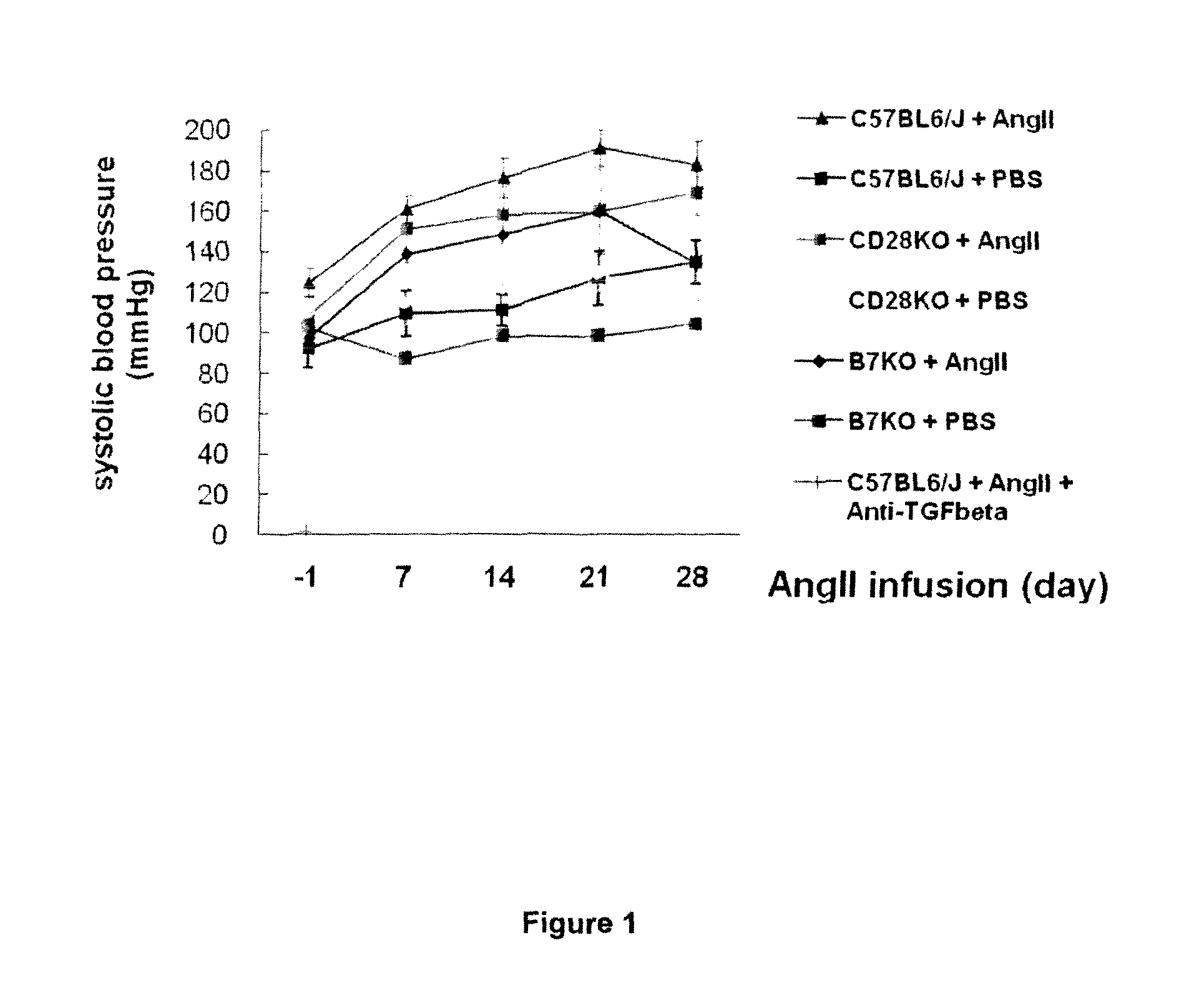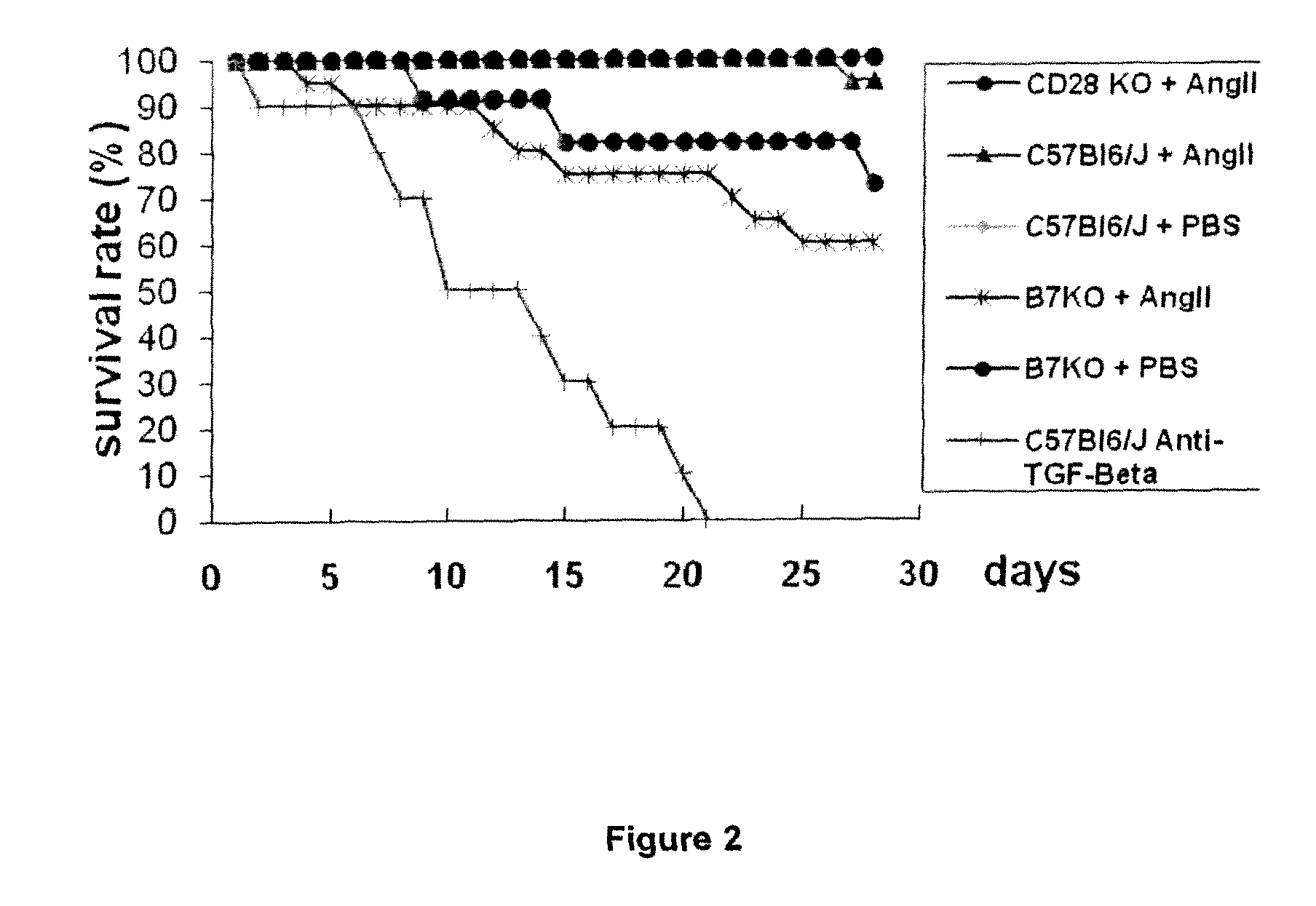Methods for producing a non human model for aortic aneurysm
a technology of aortic aneurysm and animal model, which is applied in the field of producing a non human animal model of aortic aneurysm, can solve the problems of aortic dilatation and aneurysm formation, cigarette smoking is a major risk factor, and the symptoms of an aortic aneurysm often do not surface, so as to reduce the number or the activity of treg cells
- Summary
- Abstract
- Description
- Claims
- Application Information
AI Technical Summary
Benefits of technology
Problems solved by technology
Method used
Image
Examples
example 1
[0118]In this example, mouse models for aortic aneurysm according to the invention (obtained either by increasing the arterial blood pressure with angiotensin II and inhibiting the activity of TGFbeta with anti-TGFbeta antibodies; or by increasing the arterial blood pressure with angiotensin II and reducing the number or the activity of Treg cells by knocking-out the CD28 or B7 genes) were tested.
[0119]Methods:
[0120]Animal Model:
[0121]Baseline blood pressure measurements were determined on 5 consecutive days. After these baseline recordings, an osmotic minipump (Alzet Model 2004; DURECT) infusing Angiotensin II (Ang II) (Sigma, St. Louis, Mo.) at a rate of 1,000 ng / kg / min was implanted s.c. and blood pressure measurements continued for 28 days to verify continuous hypertension. The animals ingested either a normal diet containing 0.4% sodium chloride or a high salt diet with 5% sodium chloride (SDS) to accentuate hypertension and kidney injury. All animals studied were between 8 and...
example 2
[0130]6 CD28− mice were treated with angiotensin II (as described above) and with 1 mg / kg / day of trichostatin for 14 days. Trichostatin is an inhibitor of Histone Deactylase, known to increase the number of Tregs (Nat Med. 2007 November; 13(11):1299-307).
[0131]As shown in Example 1, CD28-mice treated with angiotensin II alone, were highly susceptible to aneurysm and displayed a higher mortality rate than wild-type mice. In contrast, treatment with trichostatin prevented aneurysm in those animals, demonstrating that susceptibility to aneurysm is reduced when Treg function is re-established.
PUM
| Property | Measurement | Unit |
|---|---|---|
| blood pressure | aaaaa | aaaaa |
| arterial blood pressure | aaaaa | aaaaa |
| elastic | aaaaa | aaaaa |
Abstract
Description
Claims
Application Information
 Login to View More
Login to View More - R&D
- Intellectual Property
- Life Sciences
- Materials
- Tech Scout
- Unparalleled Data Quality
- Higher Quality Content
- 60% Fewer Hallucinations
Browse by: Latest US Patents, China's latest patents, Technical Efficacy Thesaurus, Application Domain, Technology Topic, Popular Technical Reports.
© 2025 PatSnap. All rights reserved.Legal|Privacy policy|Modern Slavery Act Transparency Statement|Sitemap|About US| Contact US: help@patsnap.com



